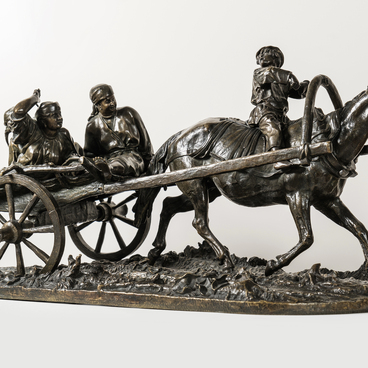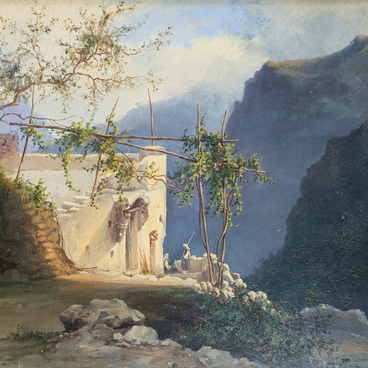Feodosy Shchedrin was a Russian sculptor who created monumental and decorative sculptures in the style of Russian classicism in the last third of the 18th century and the first third of the 19th century. He was the younger brother of the painter Semyon Shchedrin, and the father of two other artists — the painter Sylvester Shchedrin and the architect Apollon Shchedrin. Feodosy Shchedrin was an academician, professor, and rector of the sculpture department at the Imperial Academy of Arts in St. Petersburg.
The Judgment of Paris is a story from Greek mythology. Paris, also known as Alexander, was the son of Priam, King of Troy. Just before his birth, his mother Hecuba dreamed that her child would cause the ruin of Troy. Frightened by this dream, Hecuba told Priam about it. He consulted a seer who confirmed that Paris would be responsible for Troy’s demise. After the child was born, Priam had his servant Agelaus take it to the high Mount Ida and leave him in the forest. However, the baby survived. He was suckled by a bear and later found by Agelaus who raised him as his own son and named him Paris.
After becoming a prince, Paris was appointed the judge at a beauty contest, where he had to choose the most beautiful goddess — Hera, Athena, or Aphrodite. Each goddess tried to convince him to give her the prize — the golden apple — promising him great rewards. Hera offered to make him King of Asia, while Athena offered glory and skill in war. However, Paris accepted the offer of Aphrodite who promised him the love of any woman. Paris chose her promise and the love of Helen of Sparta, wife of the Greek king Menelaus. This event led up to the Trojan War which was later described by Homer. Paris became a favorite with Aphrodite. She helped him with everything. Hera and Athena were furious and hated Paris and the Trojans.
This legend has come down to us from ancient times only in fragmented and unreliable retellings, with its details varying greatly. “The Iliad” mentions the Judgment of Paris only briefly. Sophocles explored the story in his satirical drama “The Judgment”. Later authors, such as Ovid, Lucian, and others, retold the story in an ironic or didactic manner.
The National Gallery of the Komi Republic houses a copy of the bas-relief “Judgment of Paris” created in 1937.


